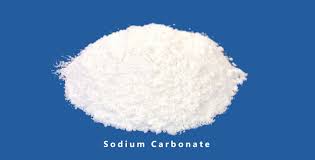Blog
Sodium Carbonate Molar Mass: Everything You Need to Know
Sodium carbonate molar mass is a fundamental concept in chemistry. Whether you’re a student, a researcher, or someone interested in chemical compounds, understanding sodium carbonate molar mass is crucial. This article will guide you through the definition of sodium carbonate, how to calculate its molar mass, and its practical applications.
What is Sodium Carbonate?
Sodium carbonate, commonly known as soda ash or washing soda, is an essential industrial chemical. Its chemical formula is Na₂CO₃. Sodium carbonate is used in a variety of industries, such as glass manufacturing, detergent production, and even water treatment. But to understand its chemical properties and reactions, knowing the sodium carbonate molar mass is key.
How to Calculate Sodium Carbonate Molar Mass
The sodium carbonate molar mass can be easily calculated by adding the atomic masses of each element present in its chemical formula (Na₂CO₃).
- Sodium (Na) has an atomic mass of approximately 23 grams per mole.
- Carbon (C) has an atomic mass of about 12 grams per mole.
- Oxygen (O) has an atomic mass of roughly 16 grams per mole.
The formula for sodium carbonate (Na₂CO₃) consists of two sodium atoms, one carbon atom, and three oxygen atoms. So, to calculate the sodium carbonate molar mass, you use the following equation:(2×23)+(1×12)+(3×16)=46+12+48=106 grams per mole(2 \times 23) + (1 \times 12) + (3 \times 16) = 46 + 12 + 48 = 106 \text{ grams per mole}(2×23)+(1×12)+(3×16)=46+12+48=106 grams per mole
Thus, the molar mass of sodium carbonate is 106 g/mol.
Importance of Sodium Carbonate Molar Mass in Chemistry
Understanding the sodium molar mass is critical when performing chemical reactions, particularly in stoichiometry. The molar mass allows chemists to convert between grams and moles, which helps in determining the amount of substance required in reactions.
For instance, if you want to react sodium carbonate with another compound, knowing the molar mass ensures that you use the correct proportions. It also aids in balancing chemical equations.
Practical Applications of Sodium Carbonate
Sodium carbonate has several practical uses in various industries. Below are some common applications:
1. Glass Manufacturing
One of the primary uses of sodium carbonate is in glassmaking. It lowers the melting point of silica, making the production process more energy-efficient. Understanding the sodium molar mass is crucial when determining the exact amounts required in large-scale production.
2. Detergent Production
Sodium carbonate is used in detergents and cleaning agents due to its alkaline properties, which help to soften water and remove dirt. Manufacturers need to carefully measure sodium carbonate based on its molar mass for effective detergent formulations.

3. Water Treatment
In water treatment, sodium carbonate is used to adjust pH levels. By calculating the molar mass of sodium, technicians can accurately dose the chemical to ensure proper water balance.
4. Chemical Reactions and Laboratories
In laboratory settings, sodium carbonate is commonly used for titration and other chemical reactions. Knowing the molar mass allows researchers to precisely measure sodium , ensuring the accuracy of experimental results.
Sodium Carbonate Molar Mass and Its Environmental Impact
Sodium carbonate is widely used and has significant industrial importance, but it’s also important to consider its environmental impact. The compound is relatively safe for the environment, but its production does involve the release of carbon dioxide (CO₂), contributing to the greenhouse effect.
Accurate calculation of sodium molar mass ensures that industries can minimize wastage and optimize processes, reducing their environmental footprint.
Understanding Molar Mass in General
To further simplify, molar mass refers to the mass of one mole of any given substance. In the case of sodium , the molar mass is 106 g/mol, meaning that one mole of sodium carbonate weighs 106 grams.
This concept is vital not only for sodium carbonate but for any chemical compound. When working with chemicals, whether in a lab or an industrial process, accurate calculations based on molar mass ensure efficient and safe chemical reactions.
The Role of Molar Mass in Balancing Equations
Balancing chemical equations is essential for predicting the outcome of reactions. Knowing the sodium molar mass helps balance equations where sodium reacts with other compounds. It ensures that the right amount of each substance is used, avoiding wastage and optimizing reaction efficiency.
For example, if sodium carbonate reacts with hydrochloric acid (HCl), the balanced equation would be:Na2CO3+2HCl→2NaCl+H2O+CO2Na₂CO₃ + 2HCl \rightarrow 2NaCl + H₂O + CO₂Na2CO3+2HCl→2NaCl+H2O+CO2
Here, the molar of sodium carbonate helps in determining the correct proportions to ensure the reaction proceeds as expected.
Conclusion: Why Sodium Carbonate Molar Mass Matters
Sodium molar mass plays a critical role in understanding the behavior of this compound in various chemical reactions and industrial applications. Whether you’re working in a lab, managing large-scale production, or studying chemistry, knowing the molar mass is essential for accurate measurements and efficient processes.
